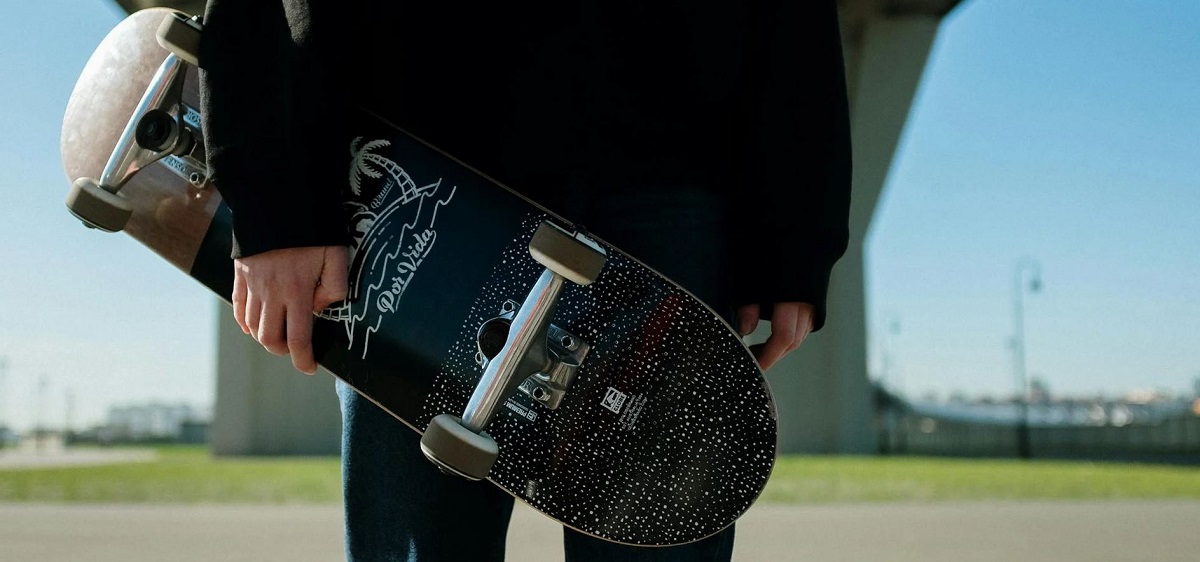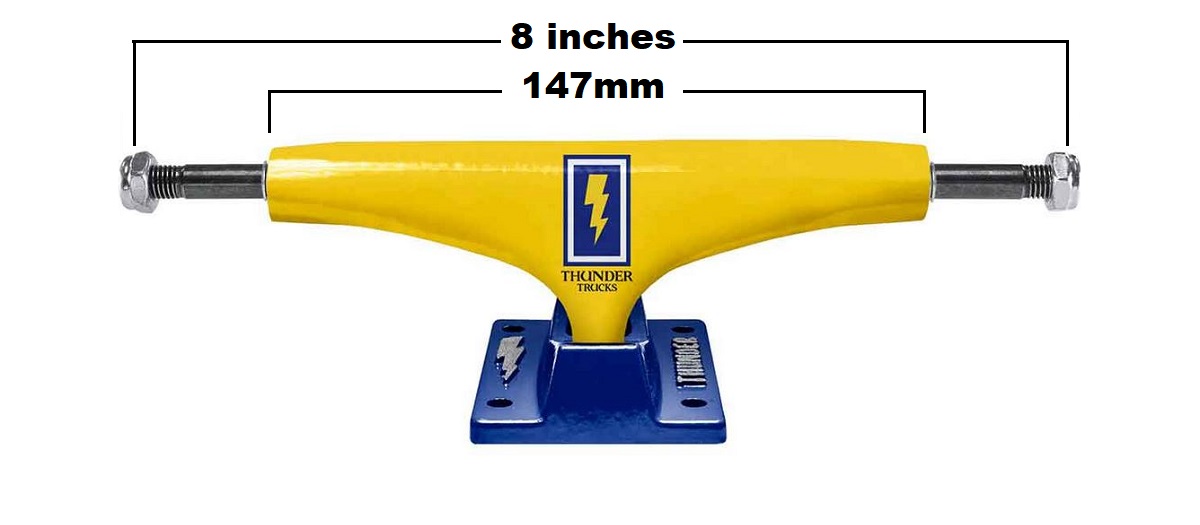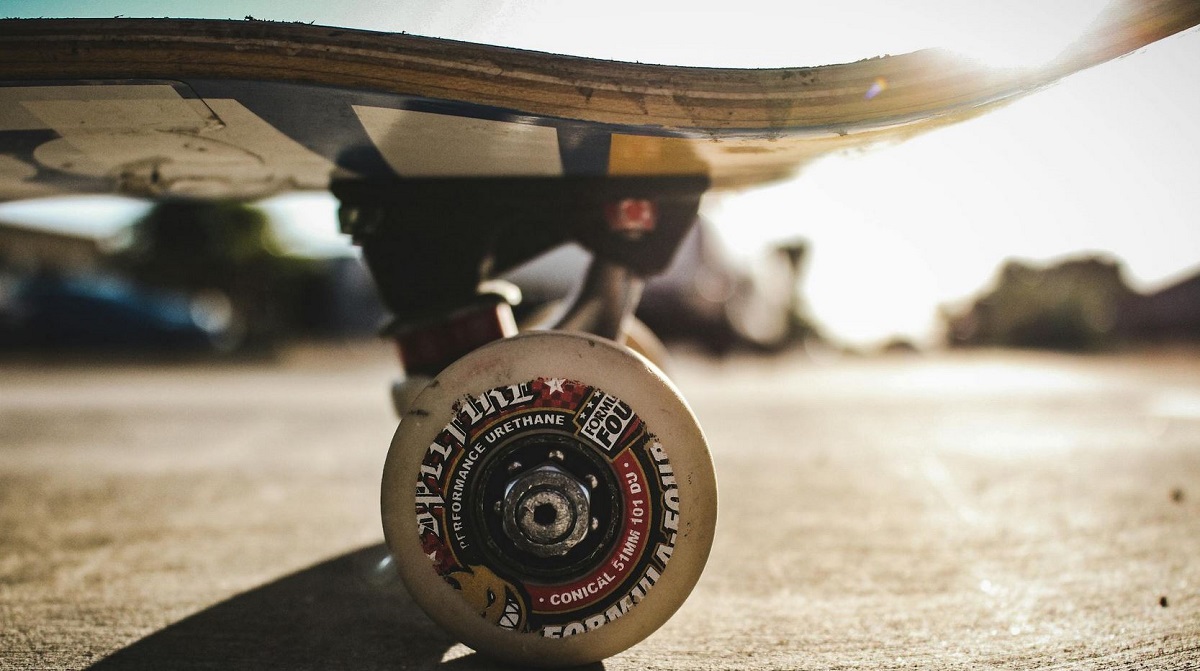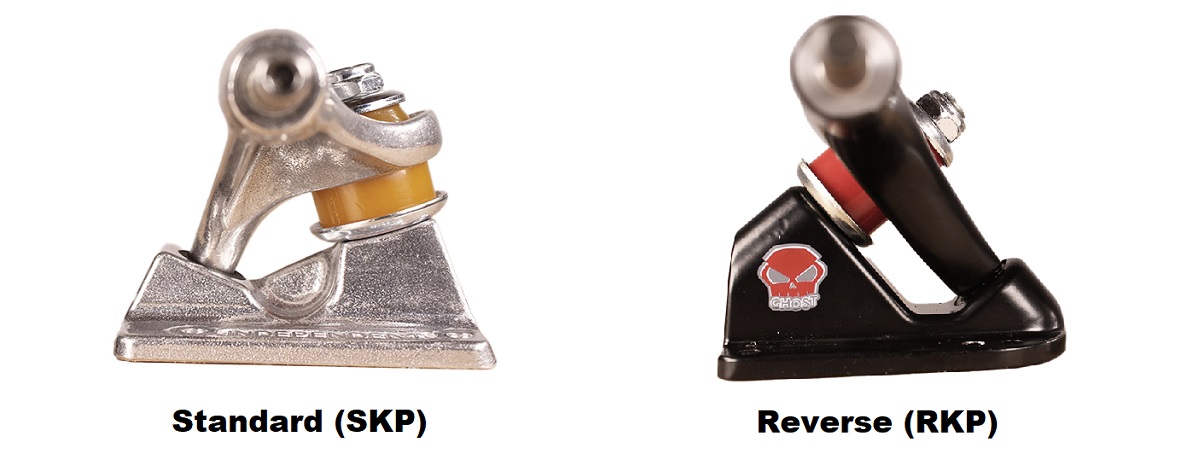What truck width should you pick? What’s the deal with standard kingpins and reverse kingpins? Is there a “best” overall truck brand or model? This is the ultimate guide to skate trucks. Let’s help you pick the perfect pair.
The two most important things to pick for the optimal setup are: Truck width and truck height (also called profile).
How to Pick Skate Truck Width

Thankfully, this part’s easy! Pick a truck width that closely matches your deck width. It’s okay if there’s a difference of plus or minus 0.25″. Not sure what deck width you need? Read this guide first.
For example, if your deck measures 8.25″ wide, you’ll want a pair of trucks that are 8″, 8.25″ (an exact match), or 8.5″ wide. Going wider will provide more stability for vert skating, while going narrower will make it easier to do flip tricks for street skating.
Understanding Skate Truck Measurements

Pictured: Thunder Trucks Hollow Yellow 147
Skate truck makers measure their models in different ways, which can be confusing. Some trucks are measured by the hanger width, while others are measured by the axle width (the overall width).
To make matters worse, different truck brands often have different hanger widths, and those widths can be advertised in millimeters or inches. For example, an Independent 139, a Thunder 147, and a Venture 5.2 all have an 8″ axle width.
Skate Truck Width Chart
To make things quick n’ easy, reference our truck size chart below to find the ideal widths from the most popular brands, based on your deck width:

Picking Truck Height (Profile)

Truck height, also called truck profile, determines the height of the deck relative to the wheels. Profiles are categorized into three sizes: Low, medium, and high.
Low trucks are great for technical tricks and beginners. The low truck’s center of gravity provides extra stability and responsiveness when technical footwork is required, and the lesser turning radius afforded by low trucks isn’t so consequential when you’re only focused on flip tricks and grinding. If you’re a new skater practicing Ollies, Manuals, Kickflips and other tricks, a set of low trucks might help you master your tricks quicker.
Medium trucks provide a good compromise. The medium truck’s still great for technical trick work, but it affords a slightly tighter turning radius for pushing through a line in a park, and general transition skating.
High trucks are best for all skating. The high truck affords the tightest turning radius and most deck clearance, making it great for cruising around town. High trucks also provide the biggest “pop” when Ollie-ing, maximizing airtime to jump stairs and obstacles, grab rails, and stick flip tricks.
Most skate trucks are High Profile. If a pair of trucks doesn’t advertise a profile, it’s probably High by default.
Wheel Size vs. Truck Height

Truck height plays a key role in picking the optimal skate wheel size. If your wheels are too big for your trucks’ deck clearance, they could rub against the underside of the board; this is called “wheel bite.”
Skate wheel size plays a key role in determining the optimal setup for your riding style — so if you’re not sure what wheels to pick, read our ultimate guide to skate wheels!
Stick with these wheel sizes for various truck profiles to avoid wheel bite:
- Low Trucks: 50mm to 53mm wheels
- Medium Trucks: 52mm to 54mm wheels
- High Trucks: 53mm+ wheels
Skate Truck Materials & Construction

The most common material used for skate trucks today is aluminum alloy, those some high-end trucks are made from titanium and steel. Aluminum is favored because it offers a good balance of strength, durability, and lightness. Here’s a breakdown of the common materials used:
Aluminum Alloy: Predominantly used for the hanger and baseplate, aluminum alloy is the standard due to its excellent strength-to-weight ratio.
Steel: Used for the axle and kingpin, steel provides the necessary strength and durability to withstand the impacts and stresses of landing tricks and dropping into bowls and ramps.
Urethane: Utilized for the bushings and sometimes the pivot cup, urethane is a durable and flexible material that ensures smooth turning and shock absorption.
Standard vs. Reverse Kingpins

The kingpin determines the entire geometry of a skate truck — thus, it largely dictates the handling and turning radius of the board. All typical skateboard trucks have standard kingpins. Reverse kingpins are designed to promote a tighter turning radius and increased deck clearance over the wheels. Reverse trucks are used almost exclusively on cruiser decks and longboards.
Ready to Ride?
Now you know everything there is to know about skate trucks! Ready to build your first deck, buy a complete, or upgrade your existing trucks? Shop our collection of skate trucks here.


